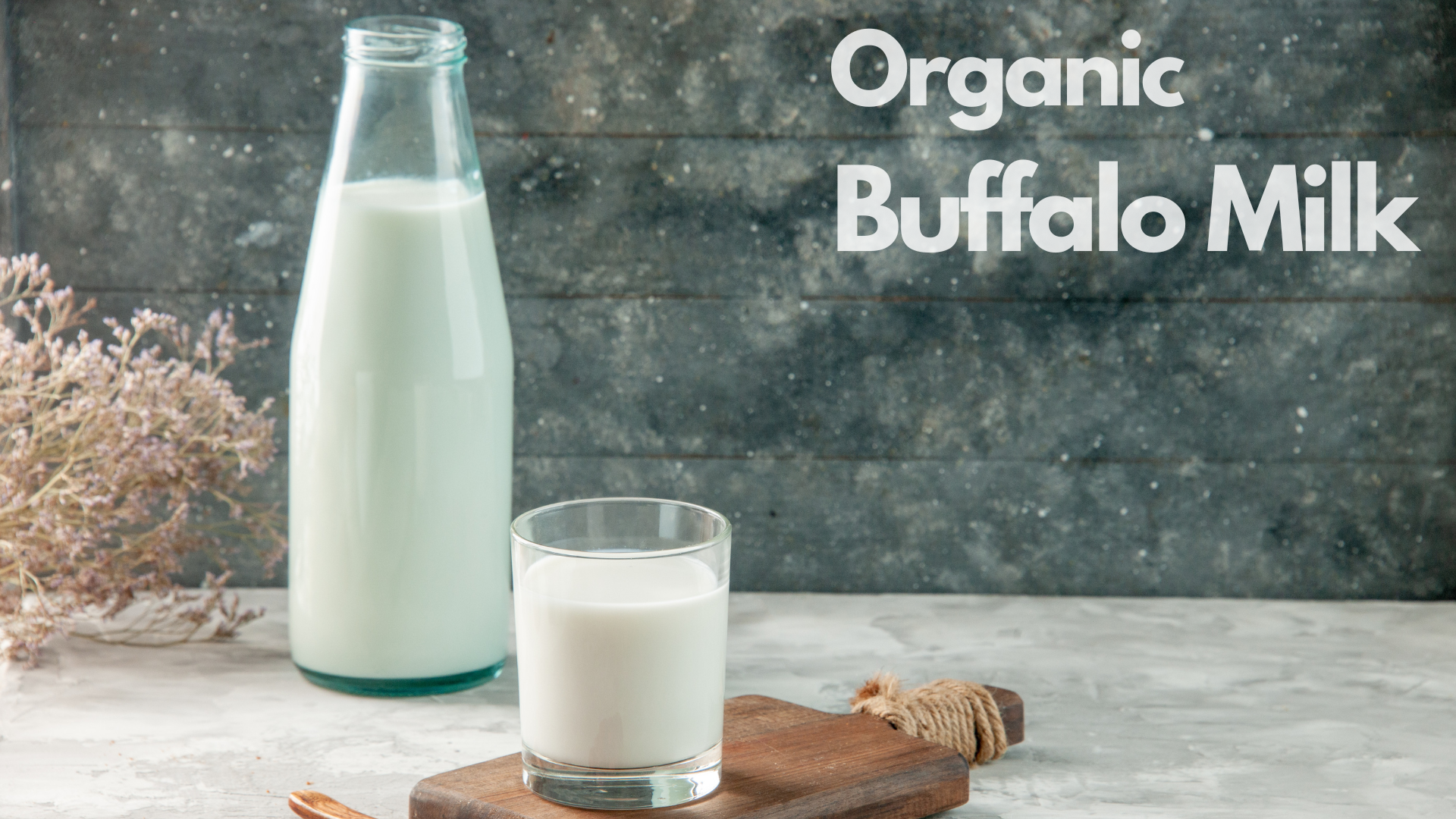Health
5 Delicious Variations of Cassasse to Try Today
Published
8 months agoon

Enter the world of culinary delight with the versatile and mouth-watering dish known as Cassasse! Originating from the Mediterranean region, this savory pastry has captured the hearts and taste buds of food enthusiasts around the globe. In this blog post, we’ll explore traditional Cassasse recipes along with five delicious variations that will tantalize your senses and leave you craving for more. Get ready to embark on a flavorful journey with cassasse, a dish that is sure to become a favorite in your recipe repertoire!
Traditional Cassasse recipe
Let’s delve into the heart of Cassasse, a traditional dish rooted in Mediterranean cuisine. The classic recipe calls for a flaky phyllo pastry crust layered with creamy ricotta cheese, eggs, and fragrant herbs like parsley and dill. The filling is rich and indulgent, perfect for satisfying comfort food cravings.
To start, brush each layer of phyllo with melted butter to create that irresistible golden crispiness once baked. The combination of savory ingredients mixed together creates a harmonious blend of flavors that dance on your taste buds with every bite.
When assembling the cassasse, remember to spread the filling evenly between layers to ensure a uniform distribution of flavors throughout. This step-by-step process may seem intricate at first, but it yields a deliciously rewarding end result that will leave you craving more.
The beauty of the traditional cassasse recipe lies in its simplicity yet complexity; it’s a dish that brings together humble ingredients to create something truly extraordinary.
Sweet and savory variations of Cassasse:
- When it comes to cassasse, there are endless possibilities for sweet and savory variations that can tantalize your taste buds.
- For those with a sweet tooth, why not try a decadent chocolate and hazelnut Cassasse? The rich chocolate combined with the nutty flavor of hazelnuts creates a dessert that is simply irresistible.
- If you’re in the mood for something savory, the spinach and feta Cassasse might be just what you need. The combination of earthy spinach and tangy feta cheese adds a depth of flavor that will leave you craving more.
- Looking for a fall-inspired treat? An apple and cinnamon Cassa.sse is perfect for cozy evenings at home. The warmth of cinnamon, paired with sweet apples, makes this dish a comforting delight.
- And if you’re craving something indulgent, why not try the bacon and cheddar Cassasse? The salty bacon perfectly complements the sharpness of the cheddar cheese, creating a savory masterpiece.
Chocolate and hazelnut Cassasse
Indulge in a decadent twist on the classic cassasse with a chocolate and hazelnut variation that will satisfy your sweet cravings. The rich chocolate combined with the nutty flavor of hazelnuts creates a delicious harmony in every bite.
The velvety smooth chocolate sauce drizzled over the crispy Cassasse crust enhances its texture and taste, making it an irresistible treat for any occasion. The crunch of toasted hazelnuts adds a delightful contrast to the creamy filling, elevating this dessert to a whole new level of enjoyment.
Whether you’re serving it as a special dessert or enjoying it as a sweet snack, this chocolate and hazelnut Cassasse is sure to impress your taste buds with its delightful combination of flavors. Treat yourself to this indulgent creation and experience pure bliss in every mouthful.
Spinach and feta
Are you a fan of the classic combination of spinach and feta? If so, you’re in for a treat with this delicious variation of cassasse. The earthy flavor of spinach pairs perfectly with the tangy richness of feta cheese, creating a savory masterpiece that will tantalize your taste buds.
To make this spinach and feta Cassasse, simply mix chopped spinach and crumbled feta cheese into the traditional Cassasse mixture before baking. The result is a delightful twist on the original recipe that adds depth and complexity to every bite.
Whether you serve it as a side dish or a main course, this spinach and feta Cassasse is sure to impress your family and friends. It’s perfect for brunches, potlucks, or just cozy nights at home when you crave something comforting yet unique.
Give this variation a try today and experience the harmonious blend of flavors that will elevate your love for Cassasse to new heights.
Apple and cinnamon
If you’re a fan of sweet and savory combinations, the apple and cinnamon Cassa-sse is a must-try! This variation adds a touch of fall flavor to the traditional dish. Imagine biting into layers of creamy cheese, tender apples, and warm cinnamon—it’s like having dessert for dinner.
The sweetness of the apples pairs perfectly with the subtle spice of cinnamon, creating a comforting and satisfying meal. The aroma that fills your kitchen as this Cassasse bakes in the oven is simply irresistible.
Whether you serve it as a side dish or main course, this apple and cinnamon Cassasse is sure to impress your taste buds. It’s an unexpected twist on a classic recipe that will have everyone asking for seconds.
Bacon and cheddar
When it comes to savory variations of cassasse, the bacon and cheddar Cassa-sse is a true delight for your taste buds. Imagine a crispy crust topped with savory bacon pieces and gooey melted cheddar cheese—pure comfort food at its best.
The smoky flavor of the bacon perfectly complements the sharpness of the cheddar, creating a delicious harmony in every bite. This unique twist on traditional cassasse brings together rich flavors that will satisfy even the most discerning palates.
Whether you’re hosting a brunch with friends or looking for a cozy dinner option, the Bacon and Cheddar Cassasse is sure to be a crowd-pleaser. Serve it hot out of the oven for maximum cheesy goodness and an irresistible aroma that will have everyone asking for seconds.
So next time you’re craving something hearty and indulgent, give this bacon and cheddar Cassasse recipe a try. It’s guaranteed to become a favorite in your culinary repertoire!
Healthier options for Cassasse:
Looking for healthier options to enjoy your favorite cassasse without compromising on taste? We’ve got you covered with some delicious alternatives that are just as satisfying.
First up, try making a cauliflower-crusted cassasse. Using cauliflower instead of traditional dough not only cuts down on carbs but also adds a unique flavor profile to your dish. It’s a great way to sneak in some extra veggies into your meal.
If you’re looking for a gluten-free option, consider using almond flour instead of regular flour in your cassasse recipe. Almond flour is rich in nutrients and gives the dish a nutty flavor that pairs well with various toppings, like vegetables or cheese.
These healthier variations offer a fresh take on the classic cassa-sse while allowing you to indulge guilt-free. Experimenting with different ingredients can lead to surprising and delightful results, so don’t be afraid to get creative in the kitchen!
Cauliflower-Crust Cassasse
Have you ever tried a cauliflower-crusted cassasse? This unique twist on the traditional recipe offers a healthier alternative for those looking to cut back on carbs. By using cauliflower as the base, you can enjoy all the delicious flavors of Cassa-sse without feeling guilty.
To make this variant, simply grate the cauliflower and mix it with eggs and cheese to create a sturdy crust. Bake it until golden brown, and then add your favorite toppings like tomato sauce, mozzarella, and fresh basil. The result is a light and crispy cassasse that’s bursting with flavor.
Cauliflower crust Cassasse is not only low in carbs but also high in nutrients. Cauliflower is packed with vitamins C and K, fiber, and antioxidants, making it a wholesome choice for your next pizza night. Give this innovative variation a try today!
Gluten-free alternative using almond flour
Looking for a gluten-free alternative to the traditional Cassasse recipe? Try using almond flour as a base! Almond flour is not only gluten-free but also adds a nutty flavor and tender texture to your dish.
To make this variation, simply substitute the regular flour in the crust with almond flour. Combine it with melted butter and eggs to create a deliciously rich and crumbly base for your cassasse.
The almond flour crust pairs well with both sweet and savory fillings, making it versatile for all taste preferences. Whether you prefer a classic cheese and tomato filling or want to experiment with unique flavor combinations, this gluten-free option will not disappoint.
Next time you’re craving cass-asse but need to avoid gluten, give this almond flour alternative a try. You’ll be amazed at how easy it is to adapt this beloved dish to suit your dietary needs without compromising on taste or texture.
Tips for making the Perfect Cassasse
1. Preheat your oven to the right temperature to ensure even cooking.
2. Use fresh and quality ingredients for the best flavors.
3. Don’t be afraid to experiment with different toppings and fillings to create your unique Cassasse recipe.
4. Allow the cassasse to cool slightly before cutting into it, this will help it hold its shape better.
5. Serve hot or cold, depending on your preference, and enjoy the delicious flavors of this versatile dish.
Whether you stick with the traditional recipe or try one of these tasty variations, Cassasse is sure to become a favorite in your household. Get creative in the kitchen and let your taste buds explore these delightful combinations!
You may like
Health
The Kidney: Structure, Function, and Importance in Human Health
Published
15 hours agoon
October 23, 2024The human body is a complex system, and within it, the kidney plays a vital role in maintaining homeostasis. These small, bean-shaped organs perform a variety of essential functions that are crucial for overall health and survival. In this article, we will explore the anatomy, functions, disorders, and importance of kidneys in human health.
Anatomy of the Kidney
Basic Structure
The kidneys are two bean-shaped organs located on either side of the spine, just below the rib cage. They are about the size of a fist, measuring roughly 4 to 5 inches long. Each kidney is surrounded by a layer of fat that acts as protection from trauma and external pressure.
The kidney is divided into two main regions: the outer cortex and the inner medulla. The cortex contains the majority of the nephrons, which are the functional units of the kidney. The medulla, on the other hand, is organized into pyramid-like structures that help transport urine into the collecting system.
Nephron: The Functional Unit
Each kidney contains approximately one million nephrons, which are microscopic filtering units. A nephron consists of two primary parts: the glomerulus and the tubule. The glomerulus is a tiny blood vessel cluster where filtration begins, and the tubule is a long, coiled tube that processes the filtrate to form urine. The nephron is crucial for filtering waste, regulating blood volume, and maintaining electrolyte balance.
Functions of the Kidney
The kidneys are remarkable organs, performing multiple functions that are vital to maintaining health. Their primary function is to filter blood, removing waste products and excess fluids to form urine. However, their role extends beyond waste removal.
1. Filtration and Waste Removal
One of the most well-known functions of the kidney is to filter blood. Every day, the kidneys process around 200 liters of blood, filtering out toxins, metabolic waste products, and excess substances. These unwanted materials are excreted in the urine, which the kidneys produce at a rate of about 1 to 2 liters per day.
Waste products filtered by the kidneys include urea (produced from protein metabolism), creatinine (a byproduct of muscle breakdown), and various toxins. The filtration process takes place in the glomeruli, where blood pressure forces water and small molecules out of the blood and into the kidney tubules. Larger molecules, like proteins and blood cells, are retained in the bloodstream.
2. Regulation of Fluid and Electrolyte Balance
The kidneys play a critical role in maintaining fluid balance in the body. They ensure that the body retains the right amount of water, excreting any excess through urine. This is important because the balance of fluids affects blood pressure, heart function, and overall cellular health.
In addition to regulating fluid levels, the kidneys maintain a balance of electrolytes, including sodium, potassium, calcium, and magnesium. These electrolytes are essential for various bodily functions, such as nerve signaling, muscle contraction, and maintaining acid-base balance.
3. Blood Pressure Regulation
The kidneys are intricately involved in regulating blood pressure through the renin-angiotensin-aldosterone system (RAAS). When blood pressure drops, the kidneys release an enzyme called renin, which triggers a series of reactions that result in the narrowing of blood vessels and an increase in blood pressure. The kidneys also regulate blood volume by adjusting the amount of fluid excreted, which further affects blood pressure levels.
4. Erythropoiesis: Stimulating Red Blood Cell Production
The kidneys are responsible for producing and secreting a hormone called erythropoietin. This hormone signals the bone marrow to increase the production of red blood cells when oxygen levels in the blood are low. This process, known as erythropoiesis, ensures that the body has enough red blood cells to transport oxygen to tissues and organs.
5. Detoxification and Drug Metabolism
While the liver is the primary organ responsible for detoxifying harmful substances, the kidneys also play a significant role in removing drugs, toxins, and other foreign substances from the blood. After filtering these substances, the kidneys help break them down and eliminate them through urine. This process is vital for preventing the buildup of harmful materials in the body.
Kidney Disorders and Diseases
Given the crucial functions they perform, any impairment of the kidneys can have serious health consequences. Several diseases and disorders can affect kidney function.
1. Chronic Kidney Disease (CKD)
Chronic Kidney Disease is a long-term condition in which the kidneys gradually lose their ability to function properly. The most common causes of CKD are diabetes and high blood pressure. Over time, CKD can progress to kidney failure, at which point dialysis or a kidney transplant is required for survival.
2. Acute Kidney Injury (AKI)
Acute Kidney Injury is a sudden loss of kidney function, usually caused by conditions such as severe dehydration, infection, or the use of certain medications. Unlike CKD, AKI is often reversible if treated promptly, though it can sometimes lead to permanent damage.
3. Kidney Stones
Kidney stones are hard deposits of minerals and salts that form in the kidneys. They can cause severe pain and urinary problems if they obstruct the flow of urine . Dehydration, high salt intake, and certain metabolic disorders increase the risk of developing kidney stones.
4. Polycystic Kidney Disease (PKD)
Polycystic Kidney Disease is a genetic disorder that causes numerous cysts to form in the kidneys. These cysts can interfere with kidney function and lead to kidney failure over time. There is currently no cure for PKD, but treatment can help manage symptoms and slow disease progression.
5. Glomerulonephritis
Glomerulonephritis is an inflammation of the glomeruli, which are the tiny filtering units in the kidneys. It can be caused by infections, autoimmune diseases, or certain medications. If left untreated, glomerulonephritis can lead to kidney damage and reduced kidney function.
Maintaining Kidney Health
Given the importance of the kidneys, it is essential to take proactive steps to protect them. Here are a few ways to maintain kidney health:
1. Stay Hydrated
Adequate hydration is essential for proper kid-ney function. Drinking enough water helps the kidneys remove waste and prevents the formation of kidney stones. Aim for 8 to 10 glasses of water per day, though individual needs may vary based on activity level, climate, and health status.
2. Manage Blood Pressure and Blood Sugar
High blood pressure and diabetes are the leading causes of kid-ney disease. Regularly monitoring and managing these conditions through a healthy diet, exercise, and medications (if prescribed) can help reduce the risk of kidn-ey damage.
3. Limit Salt and Protein Intake
Excessive salt and protein in the diet can strain the kidneys and increase the risk of kidney disease. A balanced diet that limits processed foods, red meat, and high-sodium snacks can help maintain healthy kidney function.
4. Avoid Overuse of Painkillers
Over-the-counter pain medications, especially nonsteroidal anti-inflammatory drugs (NSAIDs) like ibuprofen, can cause kidney damage when used excessively. Always follow dosing instructions and avoid prolonged use of these medications.
Conclusion
The kidneys are indispensable organs that perform a wide range of functions essential for survival. From filtering waste and regulating fluid balance to controlling blood pressure and stimulating red blood cell production, the kidneys are critical to maintaining overall health. Taking steps to protect kidney function—such as staying hydrated, managing blood pressure, and maintaining a healthy diet—can help prevent kidney disease and ensure long-term well-being.
Health
How Water Contamination Incidents Can Lead to Widespread Health Crises
Published
6 months agoon
April 16, 2024
Water contamination incidents pose significant risks to public health, often leading to widespread health crises with far-reaching consequences. Whether caused by natural disasters, industrial accidents, or inadequate infrastructure, these incidents can have devastating effects on communities.
Understanding how water contamination can lead to health crises is crucial for prevention, mitigation, and effective response efforts.
Spread of Waterborne Diseases
Pathogens such as bacteria, viruses, and parasites thrive in polluted water sources, making them dangerous for human consumption and sanitation. This was recently reported in a research paper published in the Journal of Agriculture, Food, Environment and Animal Sciences. Diseases like cholera, typhoid fever, hepatitis A, and dysentery can rapidly spread through contaminated water, causing widespread illness and even death.
Inadequate access to clean water for drinking, cooking, and hygiene exacerbates the risk of disease transmission. This is particularly seen in densely populated areas and vulnerable communities with limited resources.
Chemical Exposure
Water contamination incidents can introduce hazardous chemicals and pollutants into the water supply, posing serious health risks to exposed populations. Industrial spills, agricultural runoff, and improper waste disposal can contaminate water sources with toxic substances such as heavy metals, pesticides, and industrial chemicals.
Prolonged exposure to these contaminants through using or consuming the water can lead to several health problems, including neurological disorders and organ damage. Besides, according to TorHoerman Law, water contamination can also lead to cancer, as seen in the Camp Lejeune water contamination incident. This incident later resulted in the Camp Lejeune lawsuits.
As per the Camp Lejeune lawsuit, from 1953 to 1987, Camp Lejeune’s water supply was contaminated with toxic PFAS chemicals. This led to the development of various cancers among residents from that period, prompting the Camp Lejeune victims to file lawsuits seeking compensation. Recent updates suggest that the Camp Lejeune water settlements per person could reach as high as $1 million.
Environmental Degradation
Water contamination incidents not only jeopardize human health but also harm ecosystems and wildlife. Pollutants introduced into water bodies can disrupt aquatic ecosystems, leading to the decline of biodiversity, fish kills, and algal blooms.
Contaminated water can seep into soil and groundwater, contaminating agricultural land and compromising ecosystem services essential for human well-being. Environmental degradation worsens the health crisis by further compromising access to clean water, disrupting food chains, and increasing the prevalence of vector-borne diseases.
Food Contamination
Water contamination doesn’t just affect drinking water; it can also impact the safety of food supplies. This is better explained in the book Microbial Biotechnology in the Food Industry. Agricultural irrigation systems reliant on contaminated water sources can introduce pathogens and chemicals into crops, leading to foodborne illness outbreaks.
Contaminated water used in food processing, washing, and preparation can further amplify the risk of food contamination. It then affects not only locally produced goods but also distributed products in global supply chains. Foodborne illnesses resulting from water contamination can cause widespread outbreaks, economic losses, and public distrust in food safety systems, exacerbating the health crisis.
Economic Impact
Beyond the immediate health consequences, water contamination incidents can have profound economic impacts on affected communities and regions. According to research published in the Water Security journal, when rivers reach moderate pollution levels, downstream GDP growth is curtailed by 1.4 percent. For heavily polluted rivers, this reduction steepens to 2 percent.
Public health crises resulting from waterborne diseases and chemical exposure strain healthcare systems, leading to increased healthcare costs, lost productivity, and economic downturns.
Contaminated water sources can disrupt industrial activities, agriculture, and tourism, affecting livelihoods and local economies. The costs of cleanup and remediation efforts following water contamination incidents can also be substantial.
Frequently Asked Questions (FAQs)
What is the widespread consequence of water pollution?
Water pollution leads to a myriad of consequences, including the contamination of drinking water sources, which poses serious health risks to humans and wildlife. It also disrupts aquatic ecosystems, causing harm to aquatic life and reducing biodiversity. Moreover, polluted water can negatively impact industries such as agriculture and tourism, affecting economies and livelihoods.
How can diseases be limited through contaminated water?
To limit the spread of disease through contaminated water, it’s crucial to invest in infrastructure for water treatment and sanitation. Additionally, educating communities about proper hygiene practices and ensuring access to clean water sources are essential steps.
How does industrial water pollution affect the environment?
Industrial water pollution introduces toxins and pollutants into aquatic ecosystems, disrupting aquatic life and harming biodiversity. This contamination leads to ecological imbalances and habitat destruction, affecting both aquatic and terrestrial environments.
In conclusion, water contamination incidents can escalate into widespread health crises with multifaceted impacts on human health, the environment, and socio-economic well-being. Preventing and mitigating the risks of water contamination requires coordinated efforts across multiple sectors.
Moreover, promoting sustainable water management practices and strengthening regulatory frameworks are essential for safeguarding water resources and protecting public health.
Health
How wellhealthorganic buffalo milk tag Can Improve Your Health and Wellness
Published
7 months agoon
April 8, 2024
Welcome to the world of wellhealthorganic buffalo milk tag, where health meets indulgence in a single sip. If you’re looking to elevate your wellness game and nourish your body with the pure goodness of organic buffalo milk, you’ve come to the right place. Get ready to discover how this wholesome dairy choice can revolutionize your health journey!
The Benefits of Consuming Organic Buffalo Milk
Organic buffalo milk is a powerhouse of nutrients that can significantly benefit your health and well-being. Packed with essential vitamins like A, D, E, and K, as well as minerals such as calcium and phosphorus, this wholesome dairy option offers a rich source of nourishment for your body.
With higher protein content than cow’s milk, organic buffalo milk can support muscle growth and repair while keeping you feeling full and satisfied. Additionally, the presence of conjugated linoleic acid (CLA) in buffalo milk may aid in weight management and promote heart health.
Moreover, the unique composition of fats in buffalo milk makes it easier to digest for those who are lactose intolerant or have sensitivities to cow’s milk. Its creamy texture adds a delicious touch to various recipes while providing a natural source of hydration.
Incorporating organic buffalo milk into your daily diet can offer an array of benefits ranging from improved bone strength to enhanced immune function. Its nutrient-dense profile makes it a valuable addition to any wellness routine.
Nutritional Value of Wellhealthorganic Buffalo Milk Tag
Wellhealthorganic Buffalo Milk Tag is a powerhouse of nutrients that can elevate your health and wellness to new heights. Packed with essential vitamins like A, D, E, and K, this organic buffalo milk provides a well-rounded nutritional profile for your daily needs.
Moreover, it is rich in protein, offering a significant source of amino acids crucial for muscle repair and growth. The abundance of calcium in Wellhealthorganic Buffalo Milk Tag contributes to strong bones and teeth while supporting nerve function.
Additionally, the presence of healthy fats in this milk aids in cardiovascular health by promoting good cholesterol levels. With its natural goodness and wholesome benefits, incorporating Wellhealthorganic Buffalo Milk Tag into your diet can be a game-changer for overall vitality.
How to Incorporate it into Your Diet
Looking to add a healthy twist to your diet? Incorporating Wellhealthorganic buffalo milk tag into your daily routine can be a game-changer for your health and wellness journey.
Start your day off right by swapping out regular milk with this nutrient-rich organic buffalo milk in your morning coffee, cereal, or smoothie. The creamy texture and rich taste will elevate your breakfast experience.
Use it as a base for homemade yogurt, paneer, or even desserts like panna cotta or rice pudding. The versatility of this milk allows you to get creative in the kitchen while reaping its nutritional benefits.
Incorporate Wellhealthorganic buffalo milk tag into savory dishes like curries, soups, or sauces for added creaminess and depth of flavor. It’s an easy way to enhance the taste of your favorite recipes while boosting their nutritional value.
Whether enjoyed on its own or used in cooking and baking, this organic buffalo milk is a wholesome addition to any diet seeking quality ingredients that promote overall well-being.
Customer Reviews and Feedback
When it comes to wellhealthorganic buffalo milk, customer reviews and feedback play a crucial role in determining the product’s quality and benefits. Many consumers have shared their positive experiences after incorporating this organic buffalo milk into their diets.
Customers appreciate the rich and creamy texture of wellhealthorganic buffalo milk, along with its natural taste that sets it apart from regular milk. The freshness of the milk is often highlighted in reviews, emphasizing the farm-to-table approach taken by Wellhealthorganic.
Numerous users have reported feeling more energized and healthier since switching to wellhealthorganic buffalo milk tag. Some have even noticed improvements in digestion and overall well-being after making this dietary change.
Customer reviews suggest that Wellhealthorganic Buffalo Milk is a top choice for those looking to enhance their health and wellness through high-quality dairy products sourced from ethical farming practices.
Potential Risks and Precautions
When it comes to incorporating wellhealthorganic buffalo milk tag into your diet, there are a few potential risks and precautions to keep in mind. While organic buffalo milk is generally safe for consumption, individuals with lactose intolerance or dairy allergies should exercise caution.
One potential risk is the presence of saturated fats in buffalo milk, which can be a concern for those watching their cholesterol levels. It’s important to consume this milk in moderation as part of a balanced diet.
Additionally, if you have any underlying health conditions or concerns, it’s always best to consult with a healthcare provider before making significant changes to your diet. They can provide personalized advice based on your individual needs and health goals.
While well-healthy organic buffalo milk tag offers numerous health benefits, being mindful of any potential risks and taking necessary precautions will help you make the most of this nutritious dairy product.
Conclusion
Incorporating Wellhealthorganic Buffalo Milk Tag into your daily diet can be a beneficial choice for enhancing your overall health and wellness. With its numerous advantages, such as being organic, nutritious, and delicious, this milk tag can provide you with essential nutrients that support your body’s well-being.
By consuming Wellhealthorganic Buffalo Milk Tag regularly, you may experience improved digestion, stronger bones, enhanced immunity, and increased energy levels. Its rich nutritional profile makes it a valuable addition to any balanced diet.
Remember to always consider any potential risks or allergies before adding new food products to your routine. Consulting with a healthcare provider or nutritionist can help ensure that Wellhealthorganic Buffalo Milk Tag is suitable for you.
By choosing this high-quality organic buffalo milk tag from Wellhealthorganic, you are investing in your health and making a positive impact on your well-being. Make the switch today and enjoy the benefits of this nutrient-rich dairy product!

Dining at The Rustic Table: A Culinary Experience
Saudi Arabia: A Nation of Tradition and Transformation
Gaza: A Brief Overview

How Water Contamination Incidents Can Lead to Widespread Health Crises

Unlocking the Potential of Potassium Humate Fertilizer: Finding the Right Supplier

Reflecting on the Past: A Comparison of 2023-1954
Trending
-

 Health6 months ago
Health6 months agoHow Water Contamination Incidents Can Lead to Widespread Health Crises
-

 Business6 months ago
Business6 months agoUnlocking the Potential of Potassium Humate Fertilizer: Finding the Right Supplier
-

 Culture7 months ago
Culture7 months agoReflecting on the Past: A Comparison of 2023-1954
-

 entertainment7 months ago
entertainment7 months agoJudith Ivey – An Actress with Depth and Versatility
-

 entertainment7 months ago
entertainment7 months agoMadeline Wise: A Breakout Talent in Hollywood
-

 entertainment7 months ago
entertainment7 months agoThe Enchantment of Niles Garden Circus: An Insider’s Perspective
-

 Tech7 months ago
Tech7 months agoDizipal 608: A Comprehensive Guide to the Professional Document Scanner
-

 Other8 months ago
Other8 months agoCBD UK






